Starting my cold weather camping journey, I learned that being prepared is crucial. Camping in the cold is different from summer camping. It needs more awareness and special knowledge.
If you’re new to winter camping, knowing the right skills and gear is key. In this article, I’ll share my tips to help you enjoy camping in the cold. I aim to give you the tools and knowledge for a safe and fun winter camping adventure.
Key Takeaways
- Preparation is essential for successful cold weather camping.
- Understanding temperature variations can impact your camping experience.
- Knowing your limits is crucial for safety in winter conditions.
- Happy campers always prioritize the right gear and clothing.
- Stay informed about local weather conditions before your trip.
- Awareness of hypothermia and frostbite symptoms can be life-saving.
Understanding the Basics of Cold Weather Camping
Cold weather camping is exciting but needs careful planning. Knowing the basics is key to a great trip. It’s all about being prepared and understanding the weather.
The Importance of Preparation
Getting ready for cold weather camping is crucial. I always check the weather forecast. This helps me pack right and plan better.
Telling friends or family where I’m going is also important. It’s a safety measure in case of emergencies.
Knowing my own skills is another big part. Whether I’m new or experienced, it helps me make smart choices.
- Consult guidebooks on cold weather camping techniques.
- Engage in online forums to broaden my understanding.
- Practice setting up my gear in similar conditions.
Using these resources gives me useful tips. This preparation makes my camping trips safer and more fun.
Camping in Cold Weather: Survival Tips for Beginners
When you start winter camping, knowing about temperature changes is key. The cold can drop suddenly, affecting your comfort and safety. It’s important to watch the weather forecast and be ready for surprises. A good thermometer helps you choose the right clothes and gear.
Understanding Temperature Variability
Temperature changes in cold weather can be big. I keep an eye on weather signs like clouds or wind changes. These signs can mean the temperature is going down.
Being ready for these changes is crucial. It helps me stay warm and safe. Tips from winter camping experts have been really helpful. For more tips, check out this resource on survival tips for beginners.
Knowing Your Limits
It’s important to know how far you can go in the cold. I check how I feel every day and adjust my plans. If I’m tired or too cold, I take a break or shorten my hike.
Staying hydrated and eating enough helps me last longer in tough weather. Knowing when to stop, like when I’m shaking a lot, is key. Listening to my body makes camping more fun and safe.
Essential Gear for Cold Weather Camping
Going on a cold weather camping trip? You need the right gear for comfort and safety. Choosing items made for harsh conditions makes your trip better. Here are the key things you should get.
Shelter Considerations
A good shelter is key in cold weather. I like four-season tents because they’re strong and keep out snow and wind. They should also be well-insulated and have strong poles.
Also, make sure your tent has a good rainfly. This keeps moisture out.
Recommended Sleeping Gear
For warm nights, you need a sleeping bag made for cold. Choose bags with synthetic or down insulation. They keep you warm.
Use a sleeping pad with a high R-value too. This keeps you warm from the ground. Together, they make sure you sleep well, even when it’s cold.
Cooking Equipment for Winter
Cooking gear is important for warmth and food in cold weather. I recommend small stoves like the MSR PocketRocket or Jetboil Flash. They work well even when it’s cold.
Choose high-energy foods like freeze-dried meals and snacks. They keep you going and are easy to make.
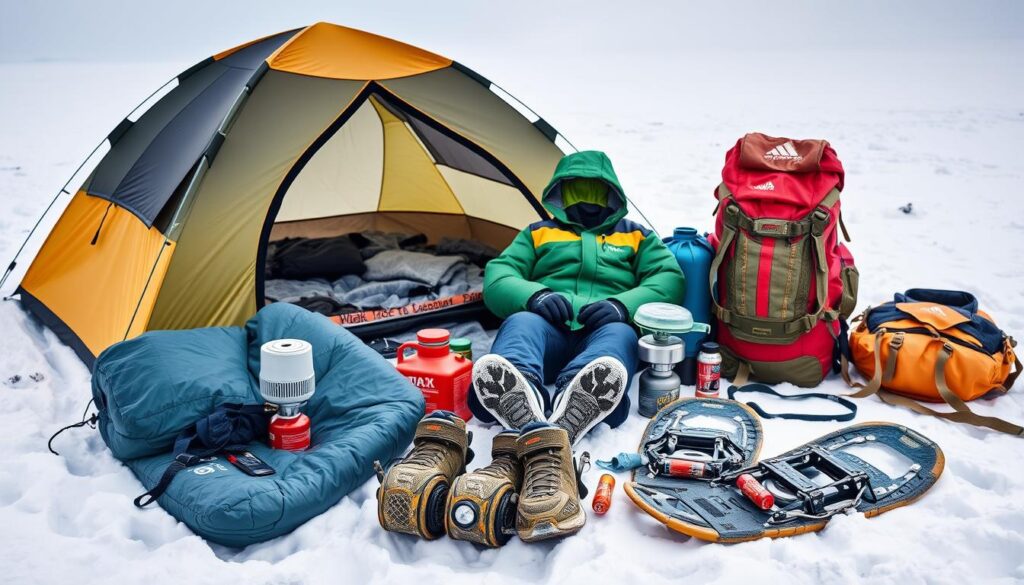
| Category | Recommendations |
|---|---|
| Shelter | Four-season tent with good insulation |
| Sleeping Gear | Cold-rated sleeping bag & high R-value sleeping pad |
| Cooking Equipment | Compact stove (MSR PocketRocket, Jetboil Flash) |
| Food | High-energy freeze-dried meals and snacks |
With the right gear, cold weather camping can be safe and fun. It makes your winter adventure unforgettable.
Best Clothing for Cold Weather Camping
Choosing the right clothes is key for comfort and safety in cold weather camping. I focus on wearing layers, picking the right shoes, and using materials that keep me warm and mobile.
Layering Techniques
Layering is crucial for dealing with changing temperatures and moisture. Start with a moisture-wicking base layer to keep sweat away. Then, add an insulating mid-layer like fleece or down to keep warm. Finally, a waterproof outer layer protects from wind and rain.
This three-layer system helps me control my body temperature well.
Footwear and Accessories
Good shoes are essential for comfort and safety. I choose insulated and waterproof boots to keep my feet warm and dry. I also wear thick, moisture-wicking socks for extra protection.
Accessories like gloves, hats, and neck gaiters are also important. They help keep warmth in and protect cold spots.
Materials to Look For
Choosing the right materials is key for cold weather camping. Look for synthetic or wool fabrics for good insulation and moisture control. Merino wool is great for comfort and warmth without being too heavy.
Using high-quality materials makes my camping trips in cold weather much better.
| Layer Type | Material Recommendations | Functionality |
|---|---|---|
| Base Layer | Synthetic, Merino Wool | Moisture management, temperature control |
| Mid-Layer | Fleece, Down Insulation | Heat retention |
| Outer Layer | Waterproof Materials (Gore-Tex, Nylon) | Protection from wind and moisture |
| Footwear | Insulated, Waterproof Boots | Warmth and dryness |
| Accessories | Wool Gloves, Hats, Neck Gaiters | Additional warmth and protection |
How to Stay Warm Camping
When I go camping in the cold, I focus on keeping warm. It’s key to stay cozy in the cold. I use my body heat well by adding blankets or sleeping pads under me.
Heat Retention Strategies
Here are some ways I keep warm:
- Wearing layers under my sleeping bag to keep heat in
- Using hand warmers in my sleeping bag for extra warmth
- Shaking my sleeping bag to spread out the insulation
Staying Dry and Comfortable
Staying dry is crucial for warmth. I manage moisture inside and outside my tent. Good ventilation stops condensation. Wearing clothes that wick away moisture keeps me dry and comfy.
For more tips on staying warm camping, check out this helpful source. It’s not just about gear; it’s about smart strategies for winter camping.
Staying Safe While Camping in the Cold
Camping in cold weather can be an amazing adventure. But, safety comes first. It’s important to know the signs of hypothermia and frostbite. Quick action can save your camping trip.
Knowing these signs helps us stay safe. We can enjoy the outdoors without worry. Here, I’ll share key indicators and first aid tips for cold weather injuries.
Recognizing Hypothermia and Frostbite Symptoms
Hypothermia happens when your body loses heat too fast. It’s dangerous. Early signs include:
- Shivering
- Slurred speech
- Weak pulse
- Exhaustion or drowsiness
Frostbite is when skin and tissues freeze. It often hits fingers, toes, ears, and nose. Look out for:
- Cold and numb skin
- Skin turning white or grayish
- Hard or waxy feeling skin
- Bubbles or blisters in severe cases
First Aid Essentials for Cold Weather
A good first aid kit is key for cold weather camping. Here are must-haves:
| First Aid Item | Purpose |
|---|---|
| Hand warmers | To provide immediate warmth for fingers and toes |
| Thermal blanket | To retain body heat in emergencies |
| Gauze and bandages | For treating minor cuts and scrapes |
| Antiseptic wipes | For cleaning wounds and preventing infection |
| Cold packs | To reduce swelling and soothe injuries |
For hypothermia, remove wet clothes and cover with dry layers. If awake, give warm liquids. For frostbite, warm slowly but avoid direct heat.
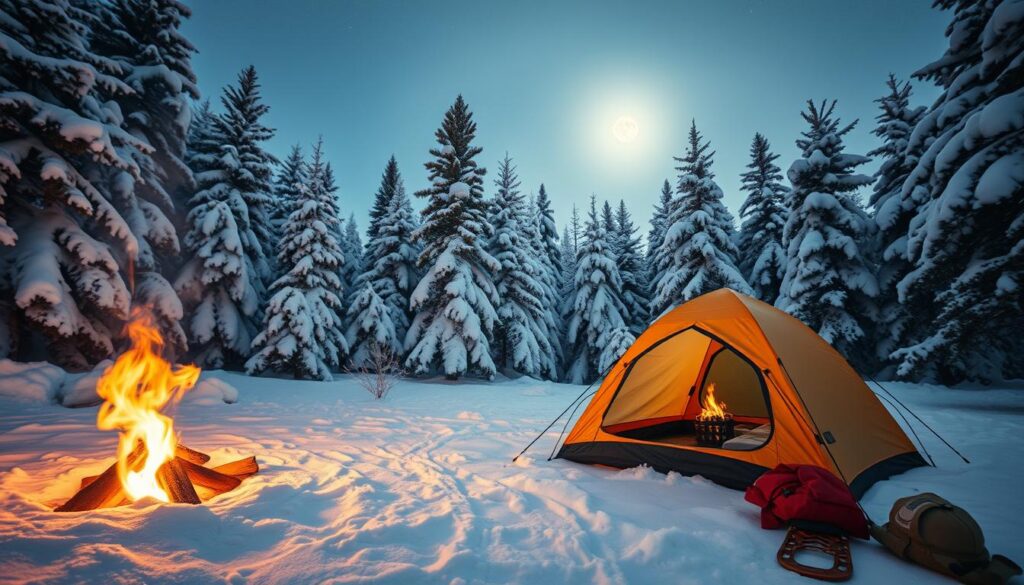
Cold Weather Camping Tips for Beginners
Choosing the right campsite is key for a good cold weather camping trip. Think about elevation, wind exposure, and water access. Planning ahead can make your winter camping safer and more comfortable. Here are some tips for picking the best campsite:
Choosing the Right Campsite
- Elevate Your Camp: Pick a spot on higher ground to avoid cold air.
- Wind Protection: Camp near trees or rocks to block the wind.
- Proximity to Water: Make sure you can get to water, but avoid flooded areas.
- Avoid Depressions: Don’t camp in low spots where cold air gathers.
Knowing common mistakes can help beginners enjoy the outdoors more. My own experiences have taught me to avoid these errors:
Common Mistakes to Avoid
- Neglecting Research: Always check the local weather and understand seasonal changes.
- Poor Gear Choices: Bad clothes or gear can ruin your trip. Choose quality.
- Underestimating Cold: Don’t think you can handle it without proper insulation or heat.
- Not Testing Equipment: Set up your tent and cooking gear at home before camping.
Preparing for Cold Weather Camping
Preparing for cold weather camping requires a good plan. I make a checklist of essentials like gear, food, and safety items. It’s also key to check the weather forecast before heading out.
Pre-Camping Checklist
My checklist helps me pack right for comfort and safety. Here’s what I include:
- Camping Gear: Tent, sleeping bags for cold, and insulated pads.
- Clothing: Moisture-wicking base layers, insulating mid-layers, and waterproof outer layers.
- Cooking Supplies: Portable stove, fuel, utensils, and insulated food containers.
- Emergency Kits: First aid, headlamps, and a multi-tool.
- Navigation Tools: Maps, compass, and GPS.
Local Weather Conditions and Forecasts
Knowing the local weather is vital for cold weather camping. I always check the forecast before my trip. This helps me:
- Understand temperature ranges and weather risks.
- Adjust my packing list for the weather.
- Plan activities for safe weather times.
Being thorough in preparation and knowing the weather forecast makes my camping trip better. It ensures safety and comfort.
Conclusion
Exploring cold weather camping shows how key preparation is. Whether it’s your first time or you’re looking to improve, knowing the basics is crucial. I’ve shared tips on gear, keeping warm, and safety that every camper needs.
The right gear makes winter camping enjoyable and safe. Choosing the right clothes, shelter, and cooking tools is important. Also, knowing how to spot hypothermia and frostbite, and having a first aid kit, keeps trips safe and fun.
Starting with winter camping can seem daunting, but with this knowledge, it’s exciting. I’m ready to turn challenges into great memories. Winter camping for beginners is about enjoying nature’s beauty in the snow while being safe and prepared. So, get ready to explore the beauty of cold weather camping!

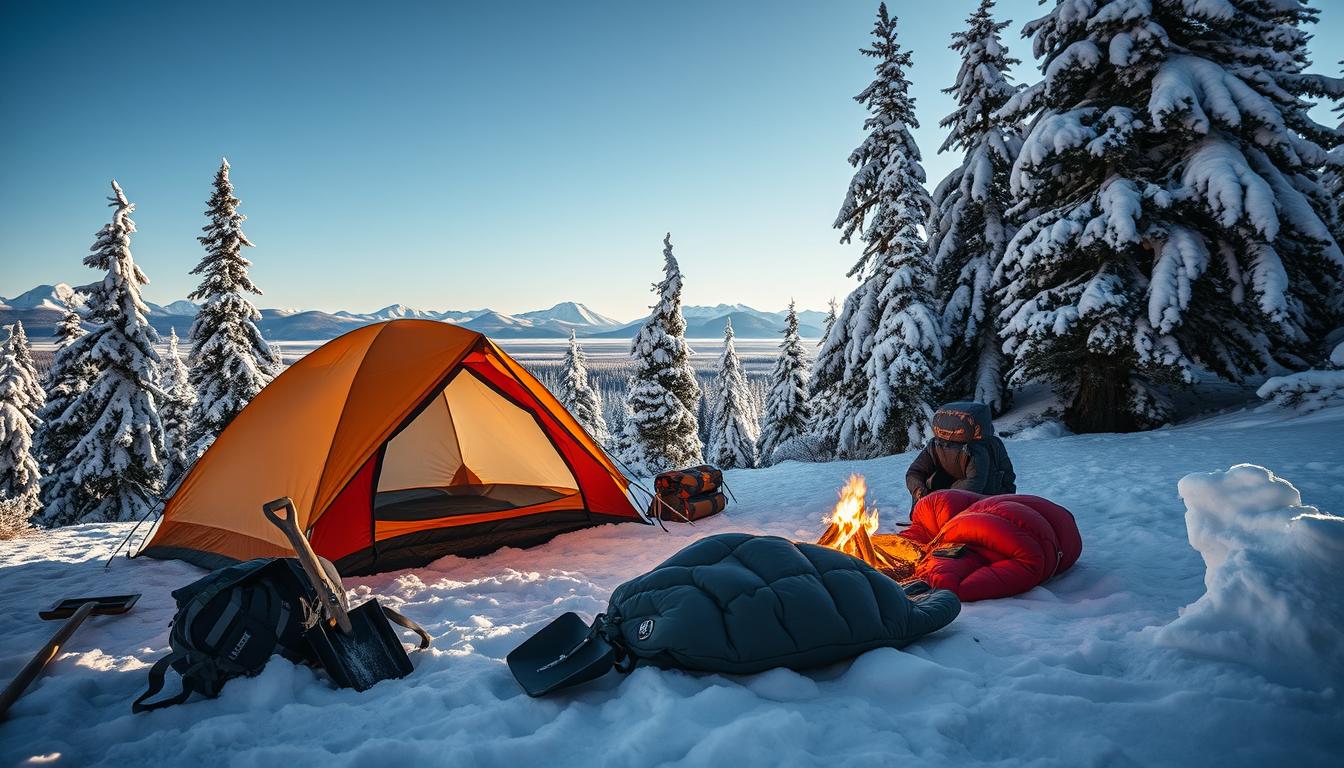

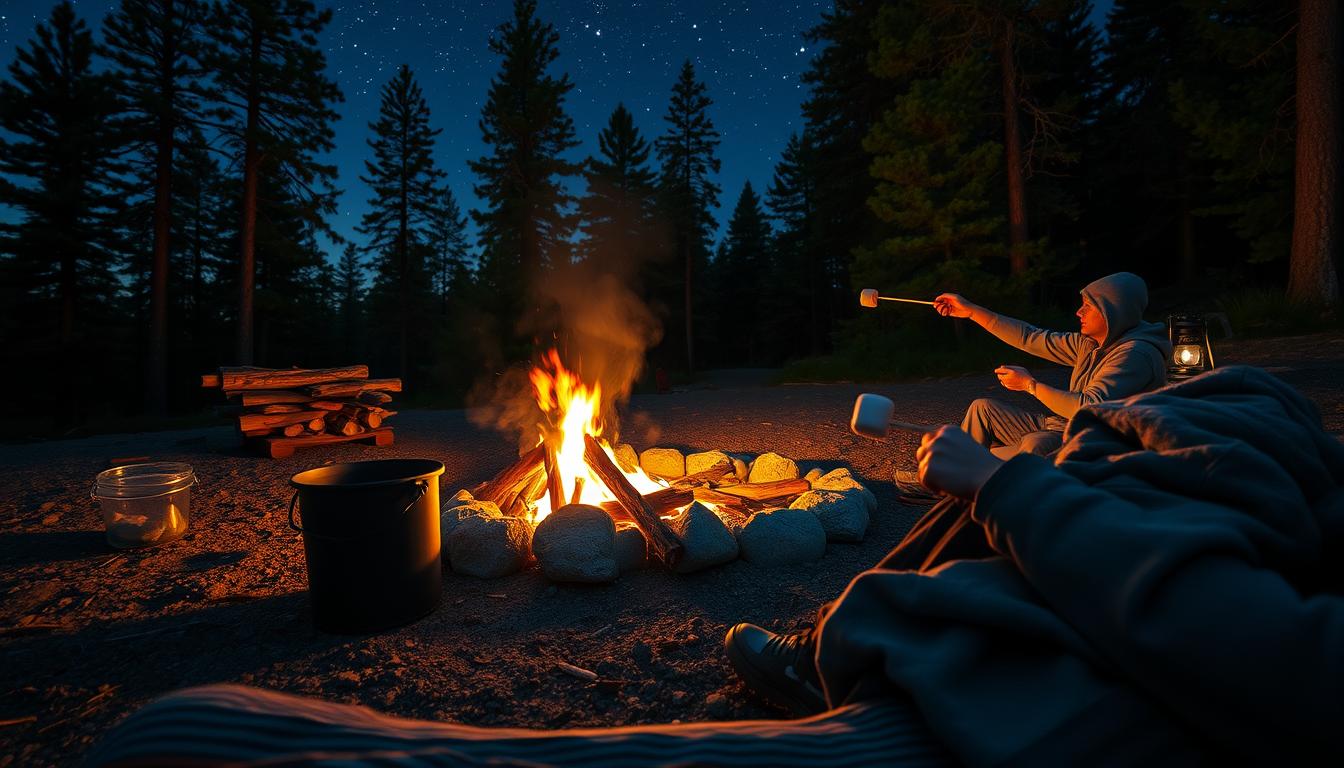
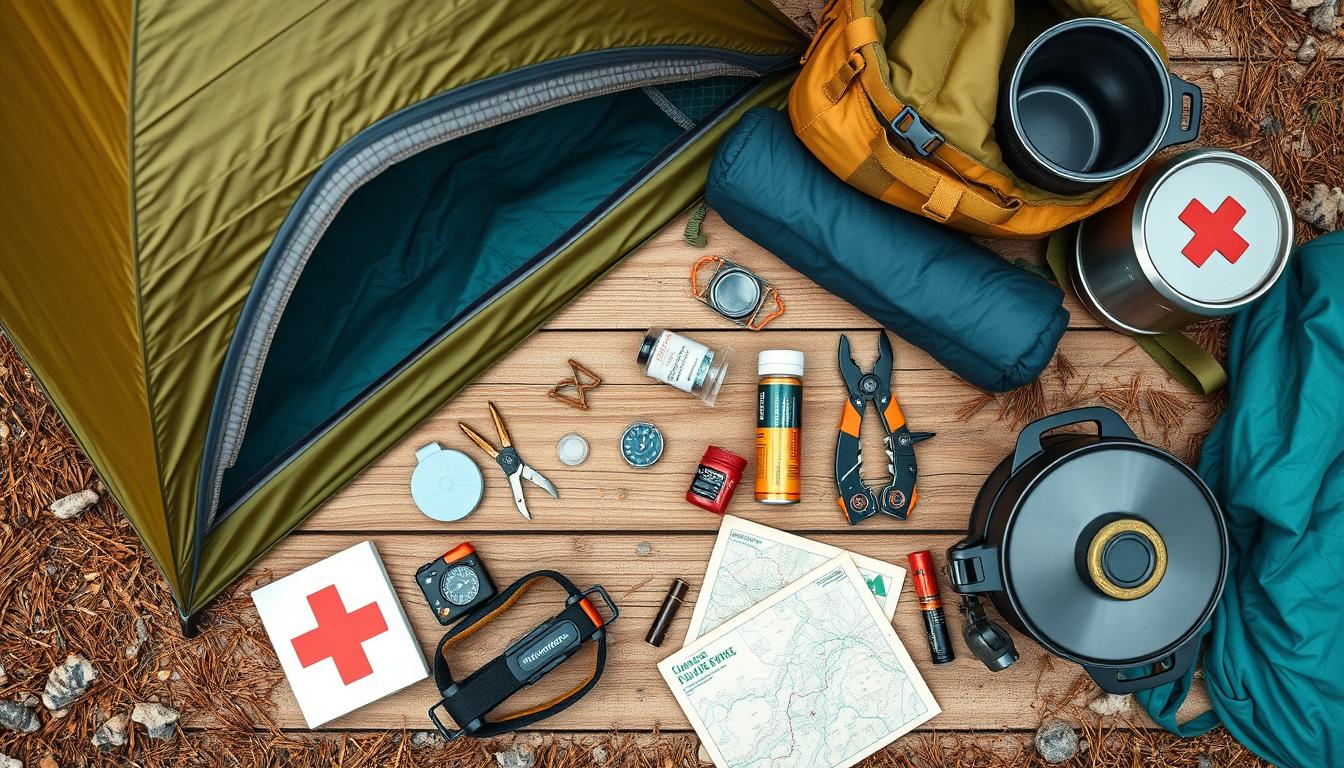
Leave a Reply